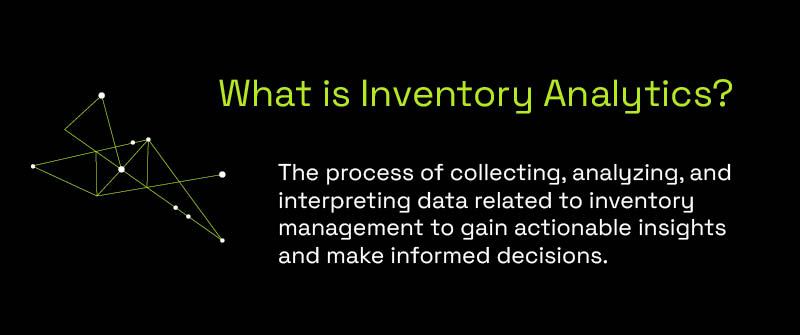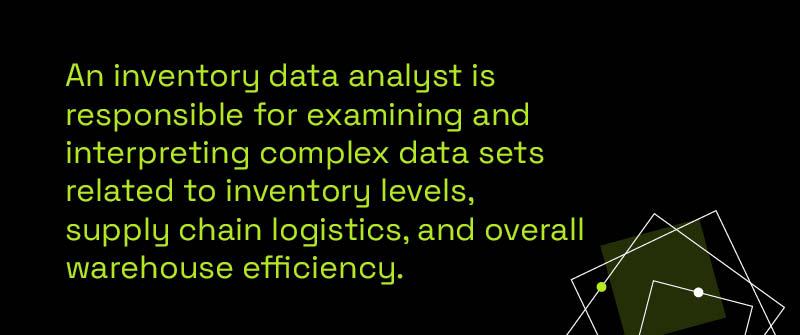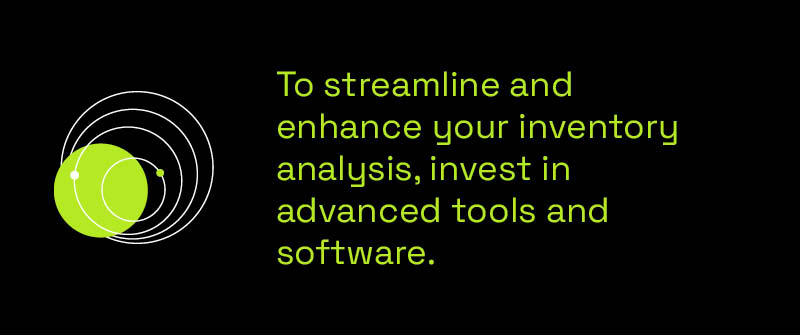
Introduction to Data Analytics in Inventory Management
Definition and Overview of Data Analytics in Inventory Management
In today’s dynamic business landscape, manufacturing data analytics has emerged as a game-changer for efficient inventory management. By leveraging advanced analytical tools, businesses can collect, process, and interpret vast amounts of data to make informed decisions and optimize operations. At its core, data analytics involves extracting actionable insights from raw data to enhance various functions, including stock levels, demand forecasting, and supply chain logistics. By utilizing inventory analytics, businesses can significantly improve customer satisfaction, reduce operational costs, and enhance the overall inventory management process.
What is Inventory Analytics?
Inventory analytics is the process of collecting, analyzing, and interpreting data related to inventory management to gain actionable insights and make informed decisions. This practice involves leveraging various techniques, tools, and technologies to examine inventory data, identify trends, and optimize inventory management processes. By utilizing inventory analytics, businesses can significantly improve customer satisfaction, reduce operational costs, and enhance overall efficiency.
The core of inventory analytics lies in providing real-time visibility into inventory levels, sales trends, and supply chain performance. This visibility allows businesses to respond swiftly to market changes, ensuring that they maintain optimal stock levels and avoid both overstock and stockouts. Ultimately, supply chain analytics helps businesses optimize their inventory management, leading to better alignment with customer demand and improved operational efficiency.

Importance of Data Analytics in Optimizing Inventory Levels
One of the primary reasons data analytics is crucial for inventory management is its ability to optimize stock levels. With precise data, businesses can maintain the perfect balance of inventory – ensuring enough product is on hand to meet demand without tying up excess capital in overstock. This optimization reduces warehousing costs and minimizes the risk of stockouts and overstocks, directly impacting the bottom line.
Additionally, data analytics helps in identifying and reducing excess inventory, thereby avoiding the costs associated with overstocking.
Key Benefits of Integrating Data Analytics into Inventory Management Processes
The incorporation of data analytics into inventory management offers numerous benefits:
- Improved Forecasting Accuracy: By analyzing historical sales data and market trends, businesses can predict future demand more accurately, which helps in efficient stock planning.
- Cost Reduction: Enhanced visibility into inventory levels and trends helps reduce carrying costs and eliminate unnecessary expenditures.
- Enhanced Decision Making: Real-time data access allows for swift, data-driven decision-making processes, thereby improving overall strategic planning.
- Supply Chain Efficiency: Streamlined inventory management leads to more efficient supply chain processes, reducing lead times and improving customer satisfaction.
- Improved Inventory Performance: Monitoring and analyzing inventory performance metrics helps identify efficient practices and areas needing attention, leading to better decision-making and optimization strategies.
Types and Methods of Inventory Analytics
Inventory analytics can be categorized into different types and methods, each serving a specific purpose and providing unique insights.
Types of Inventory Analytics
- Descriptive Analytics: This type of analytics offers a historical view of inventory data, helping businesses understand past performance. By analyzing inventory levels, sales trends, and other relevant data, descriptive analytics identifies patterns and trends that can inform future decisions.
- Diagnostic Analytics: Diagnostic analytics delves deeper into understanding why certain events or trends occurred. By examining inventory data, businesses can identify the root causes of issues or opportunities, enabling them to address problems more effectively.
- Predictive Analytics: Utilizing statistical models and machine learning algorithms, predictive analytics forecasts future inventory demand and identifies potential risks and opportunities. This type of analytics helps businesses anticipate changes in demand, seasonality, and supply chain disruptions, allowing for proactive planning.
- Prescriptive Analytics: Building on predictive analytics, prescriptive analytics provides actionable recommendations for optimizing inventory management processes. It guides businesses on the best course of action to take in response to anticipated changes, ensuring they can adapt swiftly and efficiently.
Inventory Analysis Methods
- ABC Analysis: This method categorizes inventory into three groups (A, B, and C) based on their value and importance. ‘A’ items are the most valuable, ‘B’ items are of moderate value, and ‘C’ items are the least valuable. Focusing on ‘A’ items helps businesses optimize their management of the most critical inventory.
- HML Analysis: HML analysis classifies inventory based on cost and importance. ‘H’ items are high-cost, ‘M’ items are medium-cost, and ‘L’ items are low-cost. This method helps businesses manage inventory costs more effectively.
- VED Analysis: VED analysis categorizes inventory based on vulnerability, essentiality, and demand. ‘V’ items are highly vulnerable, ‘E’ items are essential, and ‘D’ items are in demand. This method aids in risk management and ensures that essential items are always available.
- SDE Analysis: SDE analysis classifies inventory based on seasonality, demand, and essentiality. ‘S’ items are seasonal, ‘D’ items are in demand, and ‘E’ items are essential. This method helps businesses manage seasonal fluctuations and ensure that high-demand items are adequately stocked.
What is the Role of an Inventory Data Analyst?
In the landscape of modern business, the role of an inventory data analyst has become indispensable. An inventory data analyst is responsible for examining and interpreting complex data sets related to inventory levels, supply chain logistics, and overall warehouse efficiency.

Job Description and Primary Responsibilities of an Inventory Data Analyst
An inventory data analyst is tasked with a range of duties that revolve around ensuring optimal inventory levels and minimizing costs. Their primary responsibilities include:
- Data Collection: Gathering data from various sources such as warehouse management systems, supply chain processes, and sales forecasts.
- Data Analysis: Using advanced analytical tools to interpret data trends, identify inefficiencies, and propose actionable insights.
- Reporting: Creating detailed reports and dashboards that provide clear visualizations of inventory KPIs and metrics.
- Forecasting: Predicting future inventory needs based on historical data trends and market demands.
- Optimization: Recommending adjustments to improve inventory turnover rates, reduce holding costs, and enhance overall profitability.
Essential Skills and Qualifications
To excel in this role, an inventory data analyst must possess a blend of analytical prowess and business acumen. A data analyst may need a degree or a related field to enter the occupation. Other key skills and qualifications include:
- Analytical Skills: Proficiency in data analysis techniques and software such as SQL, Excel, and data visualization tools like Tableau or Supply Chain Power BI.
- Knowledge of Inventory Management: Understanding inventory control methodologies, supply chain dynamics, and logistics.
- Problem-Solving Abilities: Capability to identify issues and develop strategic solutions to enhance inventory processes.
- Communication Skills: Strong ability to convey complex data insights to non-technical stakeholders in an understandable manner.
- Educational Background: A degree in fields like Business Analytics, Supply Chain Management, or a related discipline is often required.
Impact on Organizational Efficiency
The influence of an inventory data analyst extends beyond the confines of the warehouse. By ensuring that inventory levels are in line with demand, they help prevent both overstock and stockouts, which can drain financial resources and damage customer satisfaction. In essence, an inventory data analyst acts as the linchpin in the supply chain, driving efficiency, reducing costs, and contributing significantly to the organization’s bottom line.
Analyzing Inventory Management Using Data Analytics
Step-by-Step Guide to Analyzing Inventory Management
What does a manufacturing data analyst do? Understanding how to effectively analyze inventory management using data analytics is crucial for optimizing your business operations. The process generally begins with data collection. This involves gathering data from various sources, such as sales records, purchase orders, and stock levels. Ensure your data is comprehensive and up-to-date to form the backbone of your analysis.
Next, data analysis techniques will be employed to interpret this data. Techniques such as regression analysis, time-series forecasting, and ABC analysis can provide deep insights into inventory trends and patterns. By identifying these trends, you can make more informed decisions regarding stock replenishment and inventory turnover.
Finally, implement inventory management software that leverages advanced analytics to automate these processes. Automated inventory management systems integrate sales data and forecasting capabilities to enhance supply chain efficiency and minimize costs related to overstocking or stockouts. Tools like SAP, Oracle, or smaller platforms like TradeGecko can offer real-time analysis, helping you stay agile and responsive to changes in inventory needs.
Key Metrics and KPIs for Inventory Analysis
Key Performance Indicators (KPIs) are essential for measuring the effectiveness of your inventory management strategies. Important metrics include turnover rate, order accuracy, stock-out rate, and carrying cost of inventory. Turnover rate, for example, reflects how often inventory is sold and replaced over a period, offering insights into inventory efficiency.
Order accuracy rate measures the precision of your inventory counts, which is vital for minimizing errors and ensuring customer satisfaction. Stock-out rate, on the other hand, helps identify how frequently items are out of stock, signaling the need for better stock-level management. Tracking the carrying cost of inventory helps in understanding how much capital is tied up in inventory, aiding in better financial decision-making.
Tools and Software for Effective Inventory Data Analysis
To streamline and enhance your inventory analysis, invest in advanced tools and software. Comprehensive ERP systems like SAP and Oracle offer integrated solutions that encompass everything from data collection to detailed analysis. These platforms often include predictive analytics features that can forecast future inventory requirements, allowing you to maintain optimal stock levels.
Additionally, specialized inventory management software like TradeGecko or Fishbowl focuses specifically on optimizing inventory processes. These tools offer functionalities such as real-time data monitoring, automated stock tracking, and detailed reporting, all of which contribute to more effective inventory management.

Best Practices for Analyzing Inventory
- Centralize Inventory Data: Centralizing inventory data provides a single, unified view of inventory across the organization. This centralization facilitates more accurate and informed decision-making.
- Use Real-Time Analytics: Implementing real-time analytics allows businesses to respond quickly to changes in demand, seasonality, and supply chain disruptions. Real-time insights enable more agile and effective inventory management.
- Regularly Audit Inventory Levels: Conducting regular audits of inventory levels helps identify discrepancies and ensures that inventory records are accurate. Regular audits are crucial for maintaining optimal inventory levels and preventing stockouts or overstock situations.
- Categorize Inventory Items: Categorizing inventory items based on their value, cost, and demand helps businesses focus on managing the most critical items effectively. This categorization supports more strategic inventory management and resource allocation.
How Data Analytics Can Help Prevent Stockouts
Data analytics plays a pivotal role in preventing stockouts by providing real-time visibility into inventory levels, sales trends, and supply chain performance. Here’s how it can help:
- Predict Future Demand: Predictive analytics enables businesses to forecast future demand accurately. By analyzing historical sales data and market trends, businesses can anticipate changes in demand and adjust their inventory levels accordingly.
- Optimize Inventory Levels: Data analytics helps businesses maintain optimal inventory levels by providing insights into stock replenishment needs. This optimization reduces the risk of stockouts and ensures that products are available when customers need them.
- Identify Supply Chain Disruptions: By monitoring supply chain performance, data analytics can identify potential disruptions before they impact inventory levels. Businesses can take proactive measures to mitigate these disruptions, ensuring a steady supply of products.
- Improve Operational Efficiency: Data analytics enhances operational efficiency by streamlining inventory management processes. Efficient operations reduce the likelihood of stockouts and improve overall supply chain performance, leading to better customer satisfaction.
By leveraging data analytics, businesses can create a more resilient and responsive inventory management system, ultimately preventing stockouts and ensuring that customer demand is consistently met.
Conclusion and Future Trends
Summary of the Benefits and Roles of Data Analytics in Inventory Management
Data analytics has undeniably transformed the landscape of inventory management. From optimizing inventory levels to ensuring accuracy through continuous audits, the integration of sophisticated data analytic methods into inventory processes offers unparalleled benefits. By leveraging data analytics, businesses can significantly enhance their operational efficiency and make informed decisions to better align inventory with demand patterns.
Future Trends and Advancements in Data Analytics for Inventory Management
The future of inventory management looks promising with the rapid evolution of data analytics trends. Emerging technologies such as artificial intelligence (AI), machine learning (ML), and the Internet of Things (IoT) are set to offer even deeper insights and predictive analytics. These advancements will enable companies to automate inventory processes, anticipate market fluctuations, and mitigate risks more effectively.
Additionally, the growing emphasis on real-time data analysis and advanced forecasting techniques will allow businesses to achieve a more agile supply chain. This agility not only helps in reducing costs but also enhances customer satisfaction by ensuring timely product availability.

Final Thoughts on the Evolving Landscape of Inventory Management with Data Analytics
The integration of data analytics into inventory management is no longer a luxury but a necessity for businesses looking to stay competitive in today’s dynamic marketplace. As technologies continue to advance, the ability to harness and interpret vast amounts of data will become even more critical.
In conclusion, companies that embrace these technological advancements and invest in robust data analytics will be well-positioned to navigate the complexities of modern inventory management. Now is the time to embed data-driven strategies in your inventory processes and unlock untapped opportunities for growth.
P3 Adaptive is at the forefront of this transformation. Our customized solutions and expert consultants are here to turn your data challenges into actionable insights, empowering you with the clarity to make executive-level decisions swiftly and confidently. Transform your inventory management with P3 Adaptive today!
Get in touch with a P3 team member